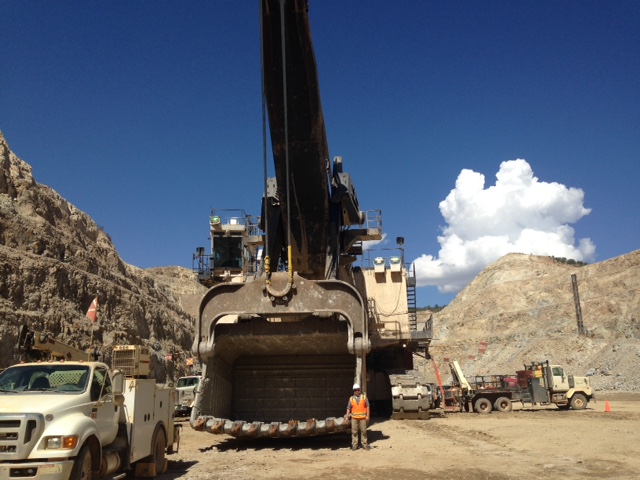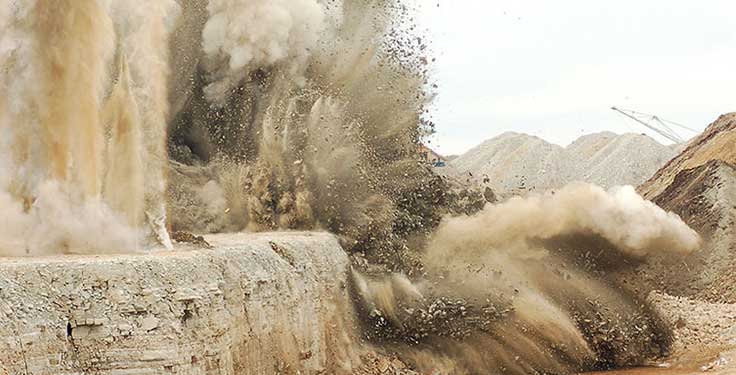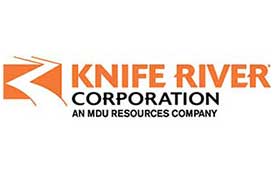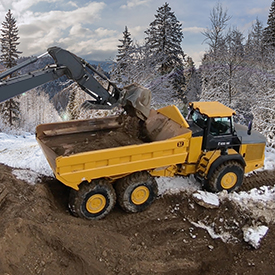
Precision Blasting Services’ Anthony Konya has been a periodic contributor to Pit & Quarry over the last few years, providing educational content to enhance drilling and blasting operations. P&Q recently caught up with Konya to talk blasting trends, technology and more.
Recently, you conveyed some thoughts with us about the state of blasting education, sharing your interest in launching an event that elevates it. Do you see a hole in the market in terms of blasting education, and how exactly do you plan to fill it?
In the last 15 or 20 years, we’ve seen a tremendous amount of innovation in the drilling and blasting industry. Years ago, we were barely getting along with electronic detonators. They were just being implemented into the marketplace, and today they are being widely used. Today, we also have drones and autonomous systems.
But how do we bring new technology, new knowledge, new concepts of blast design and of manufacturing – all of these different principles – into the marketplace and the industry? There are a lot of great avenues out there for people interested in explosives or blasting, but we’ve noticed there are a few major holes in the market that we’re actively working to fill in.
If you’re a manager or an executive from a mining or construction company, there really isn’t one event where you can find all of the new innovation in the industry without necessarily being sold to. Ideally, you would come in to learn how to take new systems and technologies, implement them at your site and generate an ROI on the investment.
So, in 2022 we’ll be launching BOOM. It’s an executive training summit. It’s a way to bring in managers and executives for three days. They can not only network with others in this industry, but be exposed to 30 different types of speakers who are experts in all of these individual fields. The whole idea is to go through a systematic approach to all of these types of solutions that we now have, and share how we actually practically implement them to improve our overall drilling and blasting site.
We should have more info out somewhere in the fall of 2021 about where that event’s going to be held and when it’s going to be.
You’ve been making investments in online blasting education – and for a variety of reasons. What types of educational opportunities are you currently making available to the blasting community?

We have a philosophy that we want to be teaching and not testing.
A problem we’ve seen in the education industry a lot is most institutions have some type of hard test. The entire syllabus and criteria is designed to follow this test. We see this even in some of the blasting industry.
For example, our blaster’s licensing test: It’s often that there’s a set guideline that we’re specifically teaching to pass that. What we want to do is teach people how to use products [and] how to go into the industry and effectively work with them – not just to pass [a] test. And part of that is we want to launch an online education platform.
We’ve had in-person training for about 40 years in our company. We have a facility called the Academy for Blasting & Explosives Technology where we do in-person, engineering-based seminars. A big issue, though, is that as new innovation in blasting comes out and as people need to get training, it’s very difficult for them to constantly be taking off time and coming to a facility to spend a week in a classroom learning a principle. Really, they need to be out on a bench or at a mine site.
So, we developed this whole idea of online education. We started that back in 2015, launching our first course. Since then, we’ve been constantly working to improve the education and teaching process.
We’ve launched several different courses on our website at academyblasting.com. They are 24/7 available online courses. They’re all self-paced. At any time you can log on there – do this from your home, office or out on a bench. You can log in, get access to materials, watch lectures and take short quizzes. Our goal is to break every lecture into 10 or 15 minutes so they’re manageable during the middle of the day.
The push for this was to lower the cost of education. Not only do you have to take the time off [and] pay for going to a seminar, but you have to pay for all of the travel costs associated with that. So, online education takes that cost of training and dramatically drops it.












